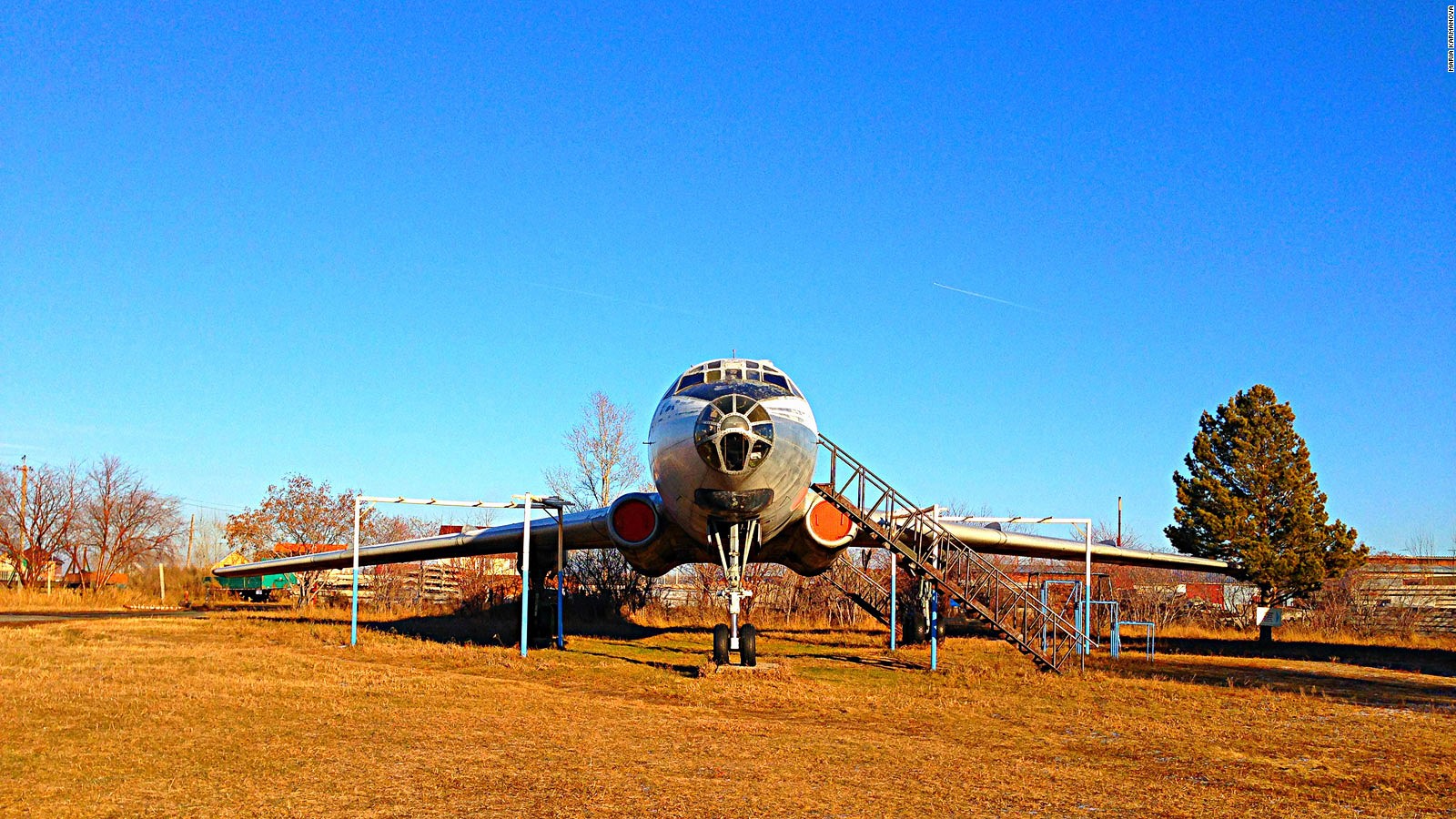(CNN)For nearly three decades, an old Soviet airliner lay abandoned on a small airfield deep inside Siberia.
Years of neglect under the harsh Siberian climate had reduced the Aeroflot Tupolev Tu-104A to little more than a decaying wreck.
Until Maria Karmanova came into the picture.
On
hearing about the old Tupolev rusting away at her local aerodrome at
Berdsk, near Novosibirsk, she set herself the challenge of restoring it
to its former glory.
Mathematician with a purpose
Karmanova,
31, holds a doctorate in mathematics and works at the Sobolev Institute
of Mathematics in Akademgorodok, one of Russia's so-called "science
cities."
She became an aviation enthusiast while making long air journeys to scientific conferences all over the world.
Becoming
keenly interested in old Soviet-made airplanes, she traveled around
Russia, the former Soviet Union and beyond, in order to locate and fly
them.
She soon ticked off aircraft such as the
Lisunov Li-2, the Ilyushin Il-14, Il-18, Il-62 and IL-76, the Tupolev
Tu-134 and Tu-154B-2, the Antonov An-12 as well as the Mil Mi-2 and
Mi-17 helicopters.
However, her most intense and fulfilling aviation adventure was awaiting near home: the derelict Tupolev Tu-104A at Berdsk.

The Tupolev Tu-104 was one of the most legendary airliners of its time.
Launched
in the mid-1950s, the Tu-104 was briefly the world's only operational
jet airliner -- a symbol of Soviet technological prowess at a time when
Western aircraft manufacturers were still struggling to come up with a
viable jet airliner.
Capable of flying
up to 115 passengers over distances of 1,500 nautical miles, it remained
the workhorse of Soviet civilian aviation until well into the 1970s.
The
aircraft at the center of this story (registration number CCCP-42382)
was delivered to Soviet flag-carrier Aeroflot in 1958 and remained in
service for 20 years.
First it flew international routes out of Moscow's Vnukovo airport to destinations beyond the Iron Curtain.
Later
it was transferred to Pulkovo airport near St.Petersburg (Leningrad at
the time) and then Novosibirsk Tolmachevo airport, before
decommissioning in 1978 saw it shipped to Berdsk.
In
retirement, it was initially used by the local aero club as a classroom
to train skydivers and glider pilots, but progressively fell into a
state of disrepair exacerbated by vandalism and equipment theft.
Karmanova heard about the Tupolev in 2009 and headed to Berdsk to make inquiries.
The restoration project started to take shape and before long she was fully committed.
The challenge was daunting.
She
had no experience of restoring or repairing aircraft, no idea what
parts were needed or where they went, and no blueprints to work from.

Karmanova embarked on a quest to gather as much information as possible about the configuration of the Tu-104A cockpit.
At
the local aero club, they advised her to contact the Administration of
Civil Aviation of Western Siberia, where former pilots might be able to
provide some guidance.
Bingo!
This
way she met a former Tu-104 co-pilot who, in addition to offering some
personal insights, volunteered a Tu-104 Flight Crew Operating Manual.
He
also helped her contact another former Aeroflot employee who'd worked
as a flight engineer on the same aircraft type. He, in turn, gave her
the aircraft technical manuals -- a real breakthrough.
Once
she had enough details about the the Tupolev´s cockpit and components,
Karmanova began scouring the secondhand market for missing parts.
Surprisingly, many Tu-104 spares can be found throughout Russia and neighboring countries, via the Internet.
And so one piece at a time, using her own money, Karmanova is reassembling the aircraft.
"The cockpit is currently about 60 to 70% restored to its original condition, but there's still much to do," she states proudly.
Although
she started her journey single-handed, she was joined after one year by
aviation maintenance worker Vladimir Chebotnikov.
He helps her install heavy equipment and restore many items.
Another
three people have joined the project more recently, helping locate some
of the missing parts and work on restoring some of the electrical
system.
Karmanova is realistic about the ultimate goals of her project.
"Of
course, my dream is to make this aircraft fly," she says. "But this
would require so much money, paperwork and a huge amount of technical
work that I don't think it's going to happen in the foreseeable future."
A more limited but feasible goal is
to repair some of the electric equipment so that lights and
communications equipment come back to life.
Ultimately, the idea is to turn the aircraft into a museum within the grounds of Berdsk airfield.
It's already possible to visit the aircraft during spring and summer.
Once restoration is complete, the aircraft will be properly adapted to receive visitors, turning it into a local attraction.
Who knows, one day it might inspire a new generation of enthusiasts devoted to preserving aviation's historical heritage.





No comments:
Post a Comment